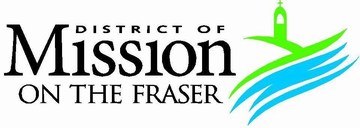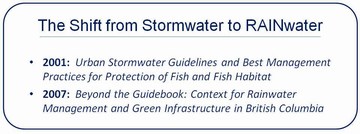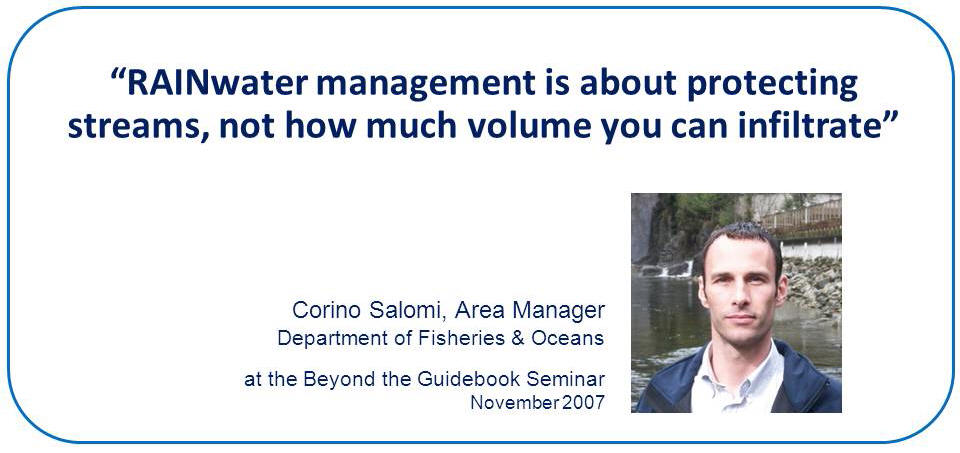District of Mission is the newest member of the Water Balance Model Partnership

Inter-Governmental Partnership welcomes District of Mission
The British Columbia Inter-Governmental Partnership (IGP) is pleased to welcome the District of Mission to the Water Balance Model community.
 “Mission is the third local government in the Fraser Valley Regional District to become a WBM Partner. This provides the Inter-Governmental Partnership with a strong presence in the eastern Fraser Valley. The cities of Chilliwack and Abbotsford are longstanding WBM Partners,” states Richard Boase, IGP Co-Chair.
“Mission is the third local government in the Fraser Valley Regional District to become a WBM Partner. This provides the Inter-Governmental Partnership with a strong presence in the eastern Fraser Valley. The cities of Chilliwack and Abbotsford are longstanding WBM Partners,” states Richard Boase, IGP Co-Chair.
The IGP comprises three provincial Ministries, numerous local governments in four regions of BC, and three federal agencies. The IGP has an Inter-Provincial Partnership with the Alberta Low Impact Development Partnership.
Tool for Green Infrastructure Assessment
“ The District of Mission has adopted the Water Balance Model as its primary tool for assessing the effectiveness of the available green infrastructure solutions that achieve rainwater runoff source control. We look at the inter-governmental partnership as a support network that facilitates exchanging ideas and sharing experiences among municipalities,” states Hirod Gill, Ph.D, P.Eng.,Design Engineer.
The District of Mission has adopted the Water Balance Model as its primary tool for assessing the effectiveness of the available green infrastructure solutions that achieve rainwater runoff source control. We look at the inter-governmental partnership as a support network that facilitates exchanging ideas and sharing experiences among municipalities,” states Hirod Gill, Ph.D, P.Eng.,Design Engineer.
Sustainable Hydrologic Systems
“The goal of the District of Mission in managing rainwater is to provide sustainable hydrologic systems that mimic natural systems, protect groundwater resources, and minimize downstream flooding and erosion.”
“The District has for some time supported implementation of the Fisheries and Oceans Canada Urban Stormwater Guidelines; and has promoted implementation of Low Impact Development practices that achieve volume reduction, water quality and rate control strategies.”
“The District appreciates that application of the Urban Stormwater Guidelines has evolved over the past decade as practitioner understanding of runoff interaction with the aquatic environment has grown. We look forward to sharing our experience with other WBM Partners in applying the Stream Health Methodology that is incorporated in the WBM,” concludes Hirod Gill.

Application of DFO Guidelines
“We are moving from guidelines to tools,” states Corino Salomi. He is Area Manager, Oceans, Habitat & Enhancement Branch, Lower Fraser Area. He represents DFO on the WBM steering committee.
“It helps to look back to understand how we got to here. In 2001, DFO released the 4-page Urban Stormwater Guidelines and Best Management Practices for Protection of Fish and Fish Habitat. That document set a direction. By 2007, however, we had concerns about how the document was being interpreted and applied. Beyond the Guidebook 2007 represents the initial course correction.”
“Beyond the Guidebook is how we have branded the paradigm-shift from traditional pipe-and-convey stormwater management to landscape-based RAINwater management,” explains Richard Boase. “It represents the natural progression of Stormwater Planning: A Guidebook for British Columbia, released in 2002.”
“Beyond the Guidebook 2007 initiated the paradigm-shift. Three years later, Beyond the Guidebook 2010 presents case study experience in three regions; and lays out where we are going next with the course correction.”
Beyond the Guidebook
“The purpose of the Beyond the Guidebook initiative is to help local governments and the development community establish what level of rainwater runoff volume reduction makes sense at the site, catchment and watershed scales. The objective is protect stream health, which is broader than how much volume one can infiltrate on a particular development,” emphasizes Corino Salomi.
“The pilot for ‘going beyond the Guidebook’ was the City of Surrey’s Fergus Creek watershed plan. This formalized the Stream Health Methodology that is  incorporated in the advanced application of the WBM,” continues Jim Dumont, IGP Engineering Applications Authority.
incorporated in the advanced application of the WBM,” continues Jim Dumont, IGP Engineering Applications Authority.
“The methodology is a function of flow duration. This enables us to correlate green infrastructure effectiveness in protecting stream health. The reason is that rainwater runoff volume management is directly linked to stream erosion and water quality.”
“Beyond the Guidebook enables practitioners to make a clear distinction between a rainfall-based approach and a runoff-based approach. The latter leads to analysis of runoff interaction with the physical aspects considered important to the aquatic environment.”
Stream Health Protection
“The science-based analytical methodology that has been validated through the Fergus Creek pilot enables local governments to explore the fundamental requirements implicit in the DFO Guidelines for stream health and environmental protection,” summarizes Jim Dumont.
“Stream health protection is a driver for Beyond the Guidebook. Stream health is a function of flow duration, and therefore correlates with stream erosion. Flow duration is something that we can measure and verify. We can also assess the potential for erosion or sediment accumulation within a watershed,” concludes Richard Boase.
To Learn More:
Click on British Columbia Moves Beyond 90% Rainfall Capture Target Proposed by United States EPA
Beyond the Guidebook 2010
“In October 1997, a focus group workshop convened by UBCM set in motion a chain of outcomes that culminated in Stormwater Planning: A Guidebook for British Columbia. This was a catalyst for change that has resulted in British Columbia achieving international recognition as a leader in implementing green infrastructure,” recalls Ted van der Gulik, IGP Chair.
 “Beyond the Guidebook 2010 is the story of what has been accomplished on the ground over the past decade. It demonstrates that the practitioner culture is changing as an outcome of collaboration, partnerships and alignment. It also provides local governments with ‘how to’ guidance for developing outcome-oriented urban watershed plans.”
“Beyond the Guidebook 2010 is the story of what has been accomplished on the ground over the past decade. It demonstrates that the practitioner culture is changing as an outcome of collaboration, partnerships and alignment. It also provides local governments with ‘how to’ guidance for developing outcome-oriented urban watershed plans.”
To Learn More:
To download a copy, click on Beyond the Guidebook 2010: Implementing a New Culture for Urban Watershed Protection and Restoration in British Columbia
To Learn More:
 Click on UBCM Annual Convention provides platform for rollout of ‘Beyond the Guidebook 2010’ — “We will use this coming together of BC’s local leaders to share and learn from each other’s experiences, and gain ideas to move our own communities forward,” states Harry Nyce, President of the Union of BC Municipalities.
Click on UBCM Annual Convention provides platform for rollout of ‘Beyond the Guidebook 2010’ — “We will use this coming together of BC’s local leaders to share and learn from each other’s experiences, and gain ideas to move our own communities forward,” states Harry Nyce, President of the Union of BC Municipalities.



